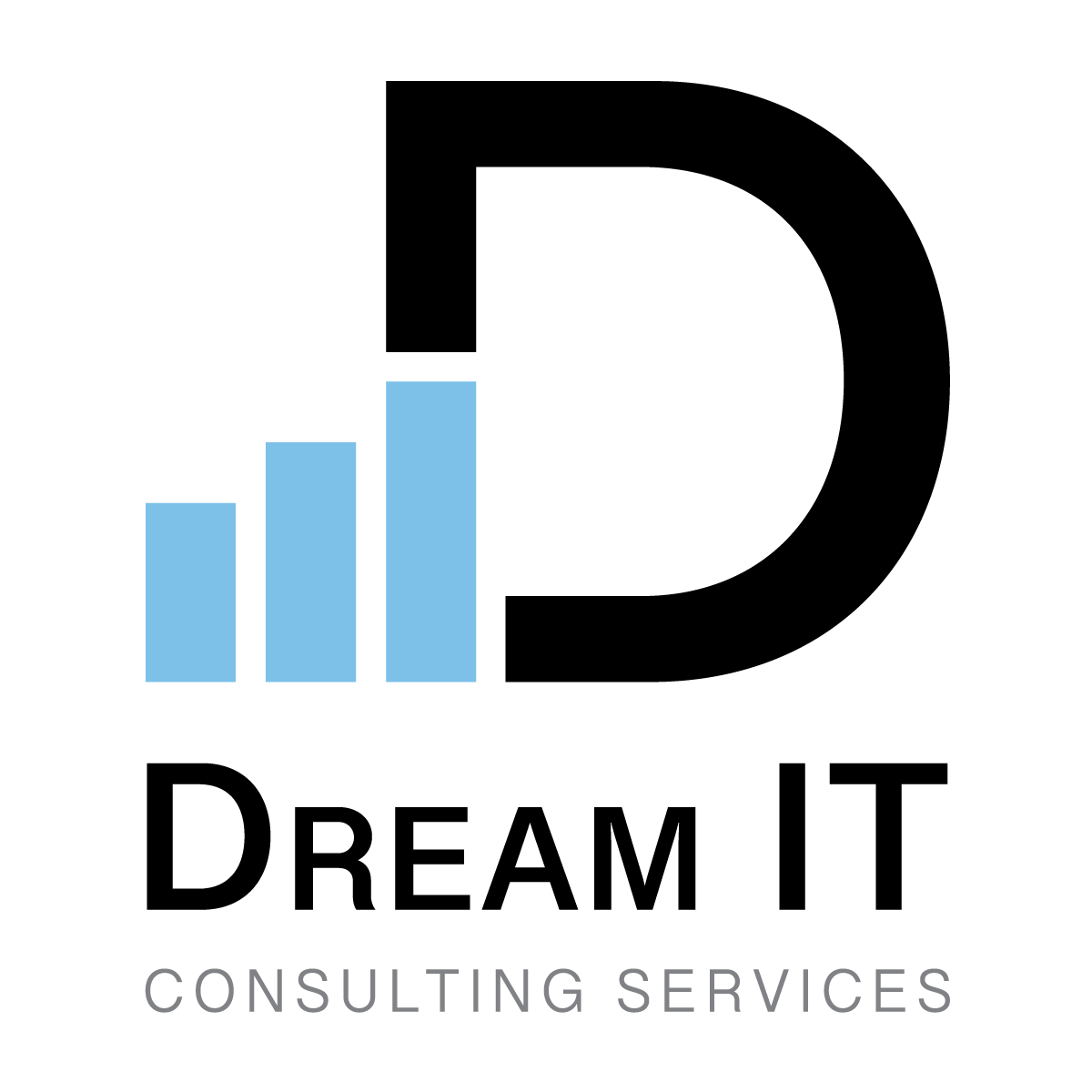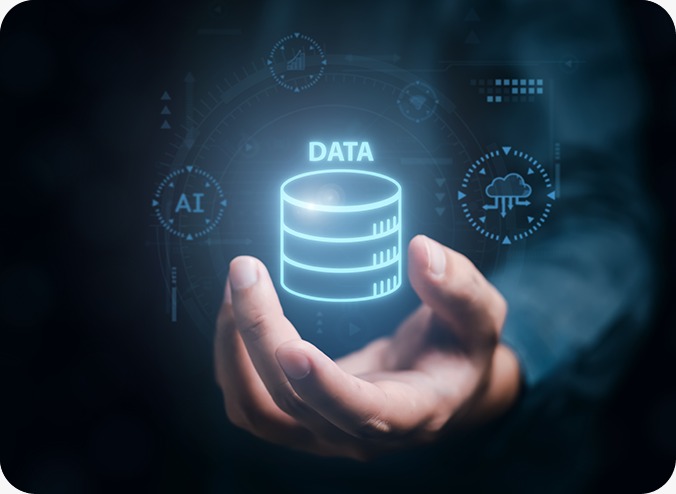Azure Data Factory vs Microsoft Fabric: Unified Data Analytics for the AI Era
Sep 26
•10 min read

In today’s data-driven landscape, organizations are leveraging data to gain competitive advantages, specially with the rise of AI. Microsoft Fabric serves as an integrated analytics platform, combining tools like Azure Data Factory, Azure Synapse Analytics, and Power BI to empower users in extracting valuable and meaningful insights from raw-unorganized data for informed decision-making. To maximize the potential of Microsoft Fabric or Microsoft Azure, organizations should integrate data for a comprehensive view, foster data literacy to enhance decision-making, adopt AI and machine learning tools for predictive modelling, ensure scalability to accommodate future growth, optimize costs through careful resource management, and encourage continuous improvement by regularly assessing and iterating on analytics strategies. By strategically leveraging these platforms, organizations can unlock their data’s full potential and drive innovation in a competitive marketplace.
What sets Fabric apart from Azure?
1.Comprehensive Analytics Platform: All-In-One Solution for Your Data Needs!
With Microsoft Fabric, customers benefit from a unified experience and architecture that streamlines the extraction of meaningful insights from raw, unstructured data. As a SaaS (Software as a Service) platform, Fabric facilitates seamless integration and optimization of tools, allowing developers to present insights effectively to clients. It supports every team involved in the analytics process by offering role-specific experiences tailored for data engineers, data scientists, data warehousing professionals, analysts, and business users, efficiently addressing their unique data needs. Azure is best suited for comprehensive cloud solutions across various domains, while Fabric is tailored for organizations seeking a streamlined, analytics-focused platform that empowers data-driven decision-making and innovation.
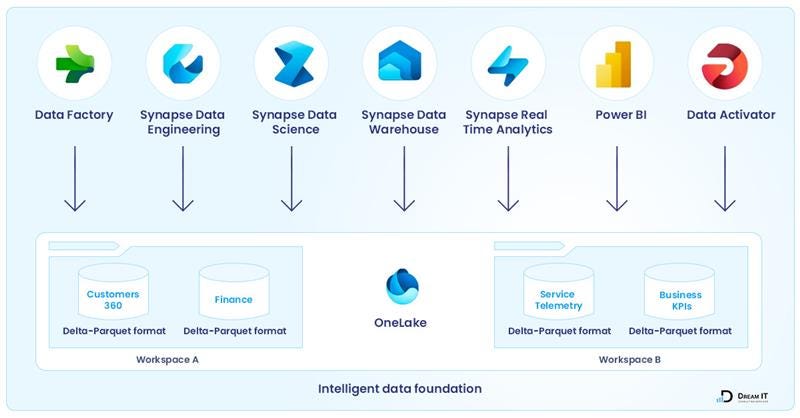
2. Lake-Centric and Open: Seamless Data Accessibility and Flexibility!
Microsoft Fabric features a built-in, multi-cloud data lake called One Lake, which is automatically accessible to all users. Like Microsoft 365 applications, all Fabric workloads are seamlessly integrated with
OneLake, helping to eliminate data silos created by isolated storage accounts. OneLake provides a unified storage solution that simplifies data discovery and sharing, along with centralized policy and security enforcement. A standout feature of One Lake is ‘Shortcuts’, which facilitates easy data sharing between users and applications without the need to move or duplicate information, thereby enhancing efficiency and collaboration. In contrast, Azure may present limitations in scalability and location-based speed concerns.
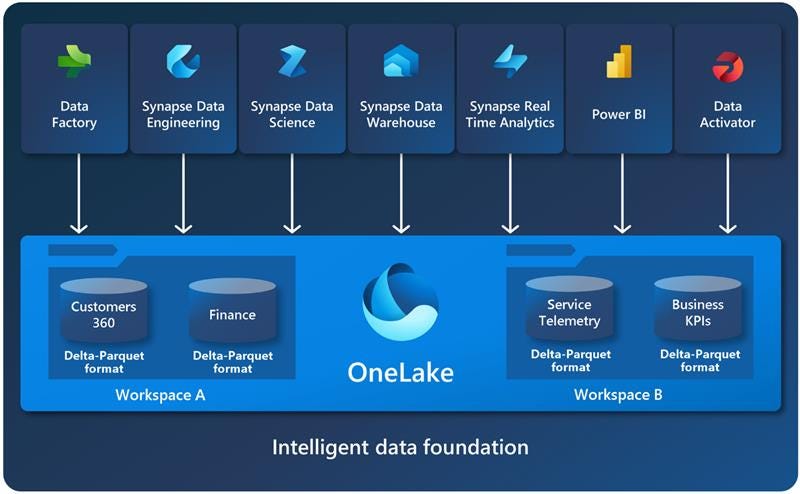
3. AI-Powered: Transforming Insights into Actionable Intelligence!
With Copilot integrated into Microsoft Fabric, users can leverage conversational language to create dataflows, pipelines, and machine learning models, as well as generate code and visualize results in an intuitive manner. This integration empowers customers to develop custom conversational experiences by combining Azure OpenAI Service models with their data, enabling them to publish these experiences as plug-ins. This enhances the versatility and accessibility of data analytics, allowing users to interact with their data in a more natural and user-friendly way.
However, it’s important to consider that Azure OpenAI can be expensive, especially for large-scale projects, which may pose a barrier for small startups or initiatives with limited budgets. Additionally, effectively leveraging Azure OpenAI requires significant expertise in AI and machine learning, which can further complicate its adoption for organizations lacking specialized skills in these areas. Therefore, while the integration of Copilot offers powerful capabilities, the associated costs and expertise requirements should be carefully evaluated.
4. Empowering Every Business User: Data-Driven Insights at Everyone’s Fingertips!
To foster a data-driven culture, Microsoft Fabric seamlessly integrates with Microsoft 365 applications, enabling everyone in an organization to make informed decisions based on data. Power BI, a core component of Fabric, is embedded in popular apps like Excel, Teams, PowerPoint, and SharePoint, making relevant data from OneLake easily discoverable and accessible. This integration allows users to transform their Microsoft 365 apps into insight hubs; for example, users can analyse data in OneLake directly within Excel and generate Power BI reports with just a click, driving greater value from their data. However, despite high availability, Azure services may occasionally experience downtime, and implementing Azure can present a learning curve, necessitating training for users.
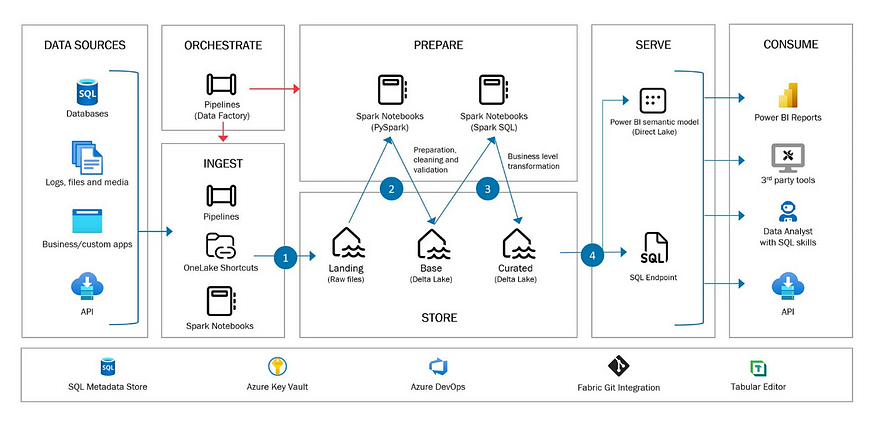
5. Cost-Efficient: Unified Capacities for Maximum Resource Optimization!
With Microsoft Fabric, purchasing and managing resources is simplified. Customers can acquire a single pool of computing power that supports all Fabric workloads, enabling them to create solutions with ease. This all-inclusive approach significantly reduces costs, as unused compute capacity in one workload can be seamlessly allocated to others, optimizing resource utilization and enhancing overall efficiency. In contrast, Azure tends to be more expensive, particularly regarding data usage.
Microsoft Fabric is an end-to-end, unified analytics platform designed for the AI era. By integrating powerful technologies such as Azure Data Factory, Azure Synapse Analytics, and Microsoft Power BI into a cohesive product, Fabric streamlines the analytics process for data professionals, eliminating fragmentation in the data and AI landscape.
With its unified experience and architecture, Fabric simplifies the integration of diverse analytics capabilities, offering role-specific experiences tailored to the unique needs of different teams involved in the analytics process. This comprehensive platform empowers organizations to unlock the full potential of their data, fostering a culture of informed decision-making and laying a solid foundation for AI-driven innovation. As businesses navigate the complexities of today’s data landscape, Microsoft Fabric stands out as a crucial ally in driving efficiency, collaboration, and transformative insights.
In contrast, Azure serves as a comprehensive cloud computing platform developed by Microsoft, offering over 200 products and services designed to help businesses and developers build, run, and manage applications across various environments, including on-premises, hybrid, and multi-cloud. However, Fabric’s simplicity in working with data and its status as a complete data-analytics tool make it a more favorable option for organizations seeking streamlined analytics solutions.
Share with your community!
